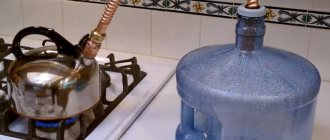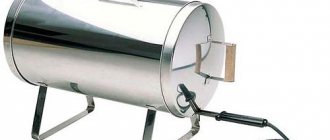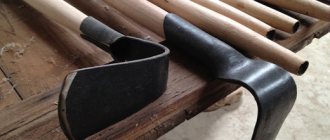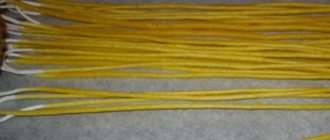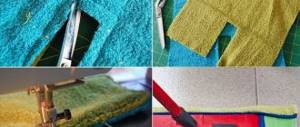Many housewives would probably like to know how to pickle pink salmon caviar themselves. This delicacy can be bought in the supermarket, but it is not cheap and is not always of high quality. In addition, the product has a short shelf life. Because of this circumstance, few people manage to enjoy freshly salted red caviar. This gastronomic pleasure is usually available to those who live near pink salmon fishing grounds.
Red caviar. The illustration for the article is used from the site top10a.ru
Synthetic caviar: history of appearance
Even during the Soviet Union, real caviar was very expensive. As a result, dissatisfaction began to grow among people who were unable to purchase the delicacy. And scientists began to work on creating an imitation of caviar. The first batches were made from real protein. The ingredients included food additives, chicken eggs and vegetable oil.
But such artificial caviar was rather tasteless and looked very vaguely like the real thing. Over time, new manufacturing technologies appeared. The method of creating caviar using gelatin began to be used. In addition to this, such recipes contain milk, algae extracts, protein supplements, etc. This technology is called “protein technology” and is currently considered outdated.
There are other manufacturing methods that do not contain protein substances or only in small quantities. In any case, the final product came to be called imitated by copying the appearance of the natural one.
Making caviar
190 gr. gelatin pour 750 g of cold water (boiled). Allow the gelatin to swell for 40 minutes. Then pour 1500 cc of cold boiled milk into the gelatin, stirring and dissolving over low heat. Filter and pour into a syringe.
Pour cold vegetable oil (refined) into the tube of the device so that there are a few centimeters left before the drain hole. The oil temperature should be no higher than 10 degrees.
Quickly inject the contents of the syringe into the tube. A jet of milk with gelatin hitting the butter with force forms granules with a diameter of 3 mm (the size of the granules is regulated by the injection force). The granules settle to the bottom of the jar, pushing the oil into the drain hole.
Once the granules are formed, place them in a sieve and use a strong stream of cold water to knock off the oil film from the surface of the granules.
What is artificial caviar made from?
What is imitation red caviar made from? Formulations in which the protein component was used have long since become a thing of the past. Thanks to her, the eggs acquired the necessary density. Modern product compositions contain gelling agents. Extracts of brown and red algae and agar are used as thickeners. They not only allow you to achieve a consistency similar to real caviar, but also reduce the calorie content of the product.
Red and black caviar gets its color from natural dyes. These are paprika and vegetable charcoal. But sometimes artificial colors are used. The constant ingredients in imitation caviar are fish meat, broth and fat. Thanks to them, the necessary taste and aroma appear.
Is it possible to make red caviar with your own hands?
To treat your household to high-quality fresh Pacific salmon caviar, you don’t have to buy a store-bought canned product. You can prepare it at home with your own hands. It's not as difficult as it might seem at first glance. The recipe for pickling red caviar is quite simple. In addition to the main ingredient, you only need to stock up on salt and water.
The advantage of this homemade delicacy is the absence of preservatives, which are often used by unscrupulous manufacturers to extend the shelf life of an expensive product. In addition, a product salted yourself will be cheaper than one purchased in a supermarket.
How is artificial caviar made?
Imitated red and black caviar is produced using different technologies:
- Protein method. First, a special mixture was prepared, which included egg white, culinary dressing and dye. Then a drop of such a mass fell into a heated water-oil emulsion or vegetable oil. The protein coagulated and a ball was formed that looked like an egg. It had a dense structure. The product could be given any color and taste. To increase shelf life, such simulated caviar was pasteurized.
- Gelatin method. This method allows you to obtain simulated caviar from various protein fillers: milk, soy, etc. They are mixed with gelatin, and the resulting mixture is heated. Then it is injected into vegetable oil at a temperature of 5 to 15 degrees. Caviar is produced in special column-shaped installations. The taste of the product is imparted by chopped herring.
- Method using seaweed. This method differs from the two protein methods described above. Until recently, it was considered the most promising, but more convenient and modern technologies have already appeared.
How to choose fish for preparing red caviar
Before you start preparing homemade red caviar, you should get fresh Pacific salmon caviar - this is the name of the genus of fish to which pink salmon belongs. This is the main ingredient you will need to prepare the delicacy. You can take it from fish.
All you need to do is purchase suitable frozen female pink salmon from the store. The sex of a fish can be determined by several external signs. The female's head has a rounded shape. In males it is elongated and somewhat pointed. The male is characterized by bright coloring, while the female is quite faded. Female pink salmon will have a small body with a delicate pink belly. If you press on the abdomen, in a female with eggs it will be quite dense.
One fish contains from 150 to 200 g of caviar grain.
Types and appearance
Imitated caviar is available for sale in many types. They differ in the raw materials used, recipes and manufacturing method.
Protein caviar is obtained on the basis of gelatin and is a ball containing homogeneous contents. This is a white or beige kernel with a dark colored shell. It is fragile and allows moisture to pass into the core and back. Because of this, the eggs do not have a stable structure.
This product differs from other types in its good taste, color and composition and is most suitable for sturgeon caviar. The plastic structure allows you to imitate lopanetz and crushed balls, producing an effect that bursts in your mouth.
Artificial caviar, which is produced using modern technologies, is very similar to natural caviar from fish of different breeds. The appearance and taste of the product are as close to natural as possible.
Artificial caviar: benefits and harms
Imitated caviar does not pose any threat to the health of the body, but the benefits of such a product are minimal. Its main advantage is its low price, especially when it comes to natural black caviar. However, if you have tried a natural product, you are unlikely to become a supporter of the synthetic analogue. Perhaps it is better to occasionally treat yourself to a natural delicacy than to look for good substitutes.
And if black caviar is an expensive pleasure, then red caviar is much more affordable. Considering how rich the composition of natural red caviar is, and how primitive the analogue is, will the savings be justified? It’s easy to imagine how artificial red caviar is made. The same algae extracts and food coloring are used for it. Analogues with meat from valuable fish species are considered the best.
Having gained an idea of how artificial caviar is made, we can draw conclusions about the popularity of natural salmon and sturgeon caviar. Due to the unique value of these products, manufacturers do not stop trying to create synthetic analogues that are accessible to the majority and as close to natural as possible.
In our IKRiNKA store you can find natural red and black caviar of first-class quality at attractive prices. You can order caviar at any time convenient for you. We deliver throughout Europe.
Benefits and harms
Imitated caviar has long been in great demand. The benefits and harms of this product are as follows:
- Gelling agents reduce the calorie content of the product, but at the same time increase its satiety due to swelling granules. For those who are on a diet, this is a good option. However, there is also the opposite side. Imitated caviar contains a lot of salt, so the body can be disrupted. This leads to swelling and difficulties in removing waste and toxins.
- Fatty acid and Omega-3 are beneficial. These components help maintain the body's youth, strengthen the immune system and force cells to fight cancer. This increases the beneficial properties of the product.
- The controversial components of artificial caviar are lactic and citric acids. Most often they do not cause allergies, but itching, irritation and rashes may still occur in some consumers. The most active of the acids is lactic. Its excess can lead to disruption of the nervous system and deterioration of muscle activity.
How to distinguish between real and artificial caviar?
How to distinguish natural caviar from artificial? There are several ways. The simplest one is based on taste. The imitation one is always saltier and gives off flavors. When natural caviar granules burst, they leave moisture and a salty taste on the tongue. There will also be a faint fishy smell.
You can distinguish natural caviar from simulated caviar using boiling water. Hot liquid is poured into a glass. Several eggs drop into it. Real caviar will not dissolve, but will only turn pale.
Tanning and coloring of granules
Place the granules in a saucepan, pour 4 liters of cold filtered tea (300 grams of black tea per 5 liters of water), tan in this solution for 30 minutes.
Then rinse and place in a pan with a 0.1% ferric chloride solution (other food colorings can be used). To achieve the desired color, rinse with cold water.
Pour the granules with a salty solution (half a liter of water and 4 tablespoons of salt). Leave for 10 minutes. And drain the solution. Transfer to a saucepan and pour in a flavoring solution (Iwashi-type herring brine) for 15 minutes. Transfer the granules into the herring emulsion (bring 1.5 kg of Iwashi-type herring using a mixer to a homogeneous emulsion) and mix. Drain off excess emulsion after 10 minutes.
High-quality analogues of real caviar
Imitated sturgeon caviar is produced using new technology. As a result, the finished product has improved taste. The color has become closer to natural sturgeon caviar. The structure of the simulated product has acquired plasticity. This allows you to feel the eggs bursting in your mouth. Only a natural product has this effect.
New types of caviar are produced in pressed or granular form. This was impossible to do using previous technologies. The composition of the new type of simulated caviar partially includes hydrobionts, real caviar and sturgeon meat. The product is manufactured on special equipment. As a result, artificial caviar acquires many shades that are characteristic only of natural sturgeon.
“Red caviar” for decorating salads and appetizers with your own hands
If you look at red caviar and think that it is very expensive to buy it at the moment, then you can prepare red caviar for decorating salads and appetizers for the holiday table yourself.
In appearance, it is practically no different from the real thing, and it tastes excellent. In general, until you try, you won’t understand. See for yourself. Prepare at least a little. I think you will like this recipe too.
Ingredients:
-10 g sugar -3 g agar or 24 g gelatin -125 ml cranberry juice -60 ml water -vegetable oil
Preparation
Pour agar or gelatin into a small saucepan or ladle, add water and let it swell.
After the agar or gelatin swells, add juice, sugar, mix and put on fire, Bring the mixture to a boil and cook for 1-2 minutes and cool slightly, Pour into a container from which you can drip or use a regular medical syringe, Pour vegetable oil into the jar and set put it in the freezer overnight, pour the prepared mixture into a syringe and drop it into cold oil. The process itself is fascinating...
True, it turned out well!
Bon appetit!
source
Shall we turn on some music to set the mood?
Now playing:
Open Kluber FM website | iOS app | Android app
Choice
Imitated red caviar can be colored not with natural dyes, but with synthetic ones. The composition must be indicated on each product package. It notes which baptisms were used in production.
Caviar with butter cream is in great demand. But all supplements are made from chemicals. The “buttercream” in caviar is made from water, flavorings, fats and flavor enhancers. All these components are harmful to the body. When choosing caviar, it is best to purchase homogeneous caviar.
When purchasing, consumers often try to take the product in a glass container. But caviar is also perfectly stored in polyethylene. Therefore, there is simply an overpayment for packaging. But you need to pay attention that there are no voids or liquid under the film. Artificial caviar should not be hard, but simply dense.
